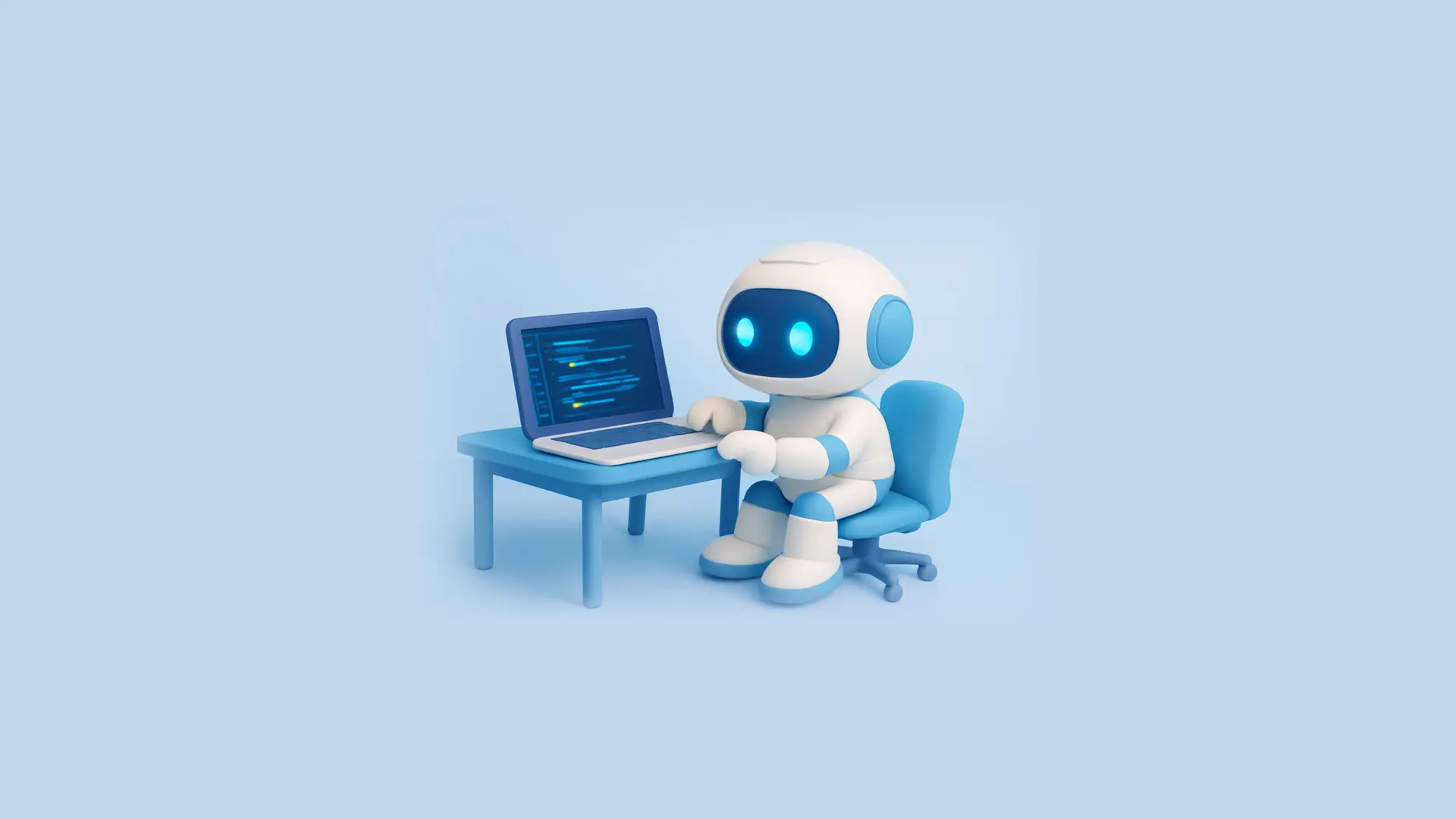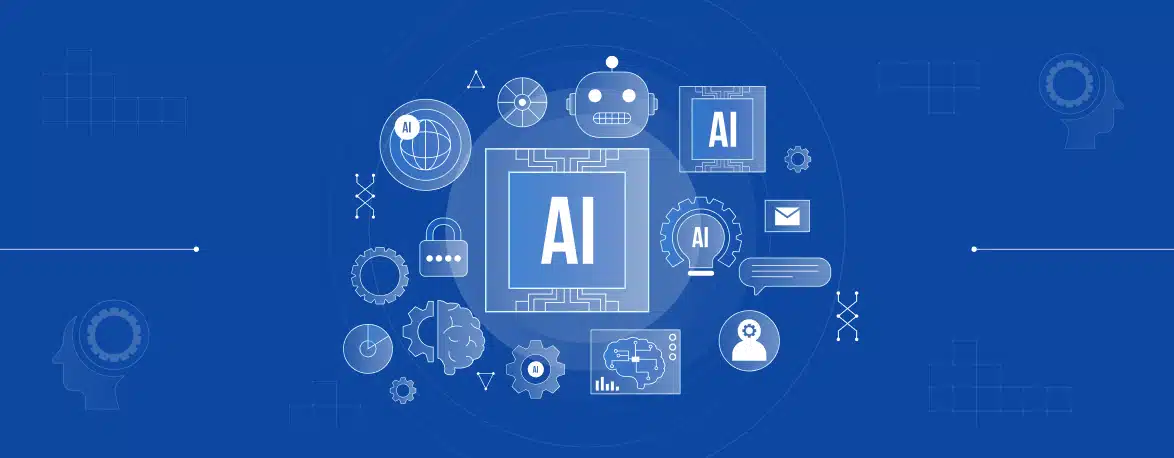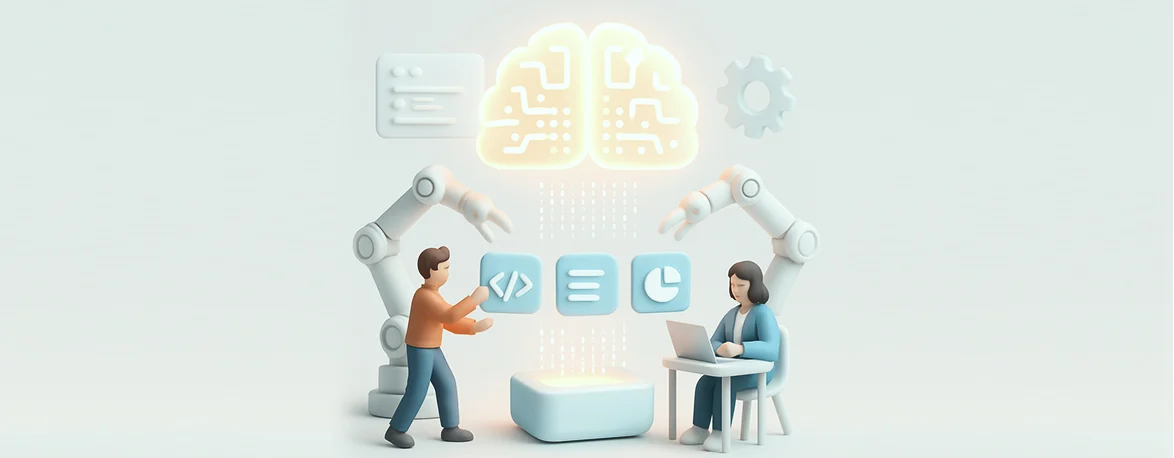- Agentic AI and It’s Role in Software Development
- Why Software Development Needs a Shift?
- How Agentic AI Reinvents the Software Development Lifecycle?
- 1. Understanding Requirements
- 2. Design and Architecture
- 3. Code Generation
- 4. Testing and Debugging
- 5. Deployment and Monitoring
- 6. Continuous Learning and Optimization
- Real-World Applications of Agentic AI in Software Development
- The Changing Role of Software Developers
- Benefits of Agentic AI in Modern Software Development
- Challenges to Keep in Mind of Agentic AI Implementation
- A Future Fueled by Intelligent AI Agents
- Final Thoughts
Software development is evolving faster than ever. The pressure to deliver high-quality, scalable, and innovative solutions in record time has pushed businesses to rethink how they build software.
Over the last few years, the integration of artificial intelligence (AI) into development workflows has gained momentum, but not all AI is created equal.
One of the most promising developments is Agentic AI, a new generation of AI that doesn’t just assist developers but actively takes initiative, makes decisions, and learns as it works. It’s more than a smart tool—it’s a collaborator.
The blog post shares insights on how Agentic AI is transforming the way we design, build, test, and maintain software, entering a future where development isn’t just faster, but more intelligent and adaptive.
Agentic AI and It’s Role in Software Development
Agentic AI refers to autonomous AI agents capable of operating independently, making decisions, adapting to new inputs, and learning from their outcomes.
Unlike traditional AI models that wait for instructions and respond with predefined outputs, Agentic AI is goal-oriented. It plans, adjusts, and takes action with minimal human input.
Think of it this way: traditional AI is like a calculator that solves what you ask it to. Agentic AI is more like a capable teammate as it understands the broader goal, figures out the steps, and contributes proactively.
When concerned with software development, this shift is major. Agentic AI can interpret product requirements, map out execution strategies, write and optimize code, perform rigorous testing, and even handle deployment and monitoring, refining its performance as it goes.
Why Software Development Needs a Shift?
Before getting into the topic of how Agentic AI helps, it’s worth understanding the challenges modern development teams face:
- Mounting technical debt: Teams often rush new features to market, leaving behind cluttered and fragile codebases.
- Legacy systems: Many organizations are still tied to outdated infrastructure, slowing modernization efforts.
- Time-to-market pressures: Developers have little bandwidth for thorough testing or experimentation.
- Talent shortages: The demand for skilled engineers continues to outpace supply, stretching teams thin.
Agentic AI offers a compelling solution. Not by replacing developers, but by enabling them to focus on meaningful, high-level tasks, while the AI handles much of the repetitive, low-level execution.
How Agentic AI Reinvents the Software Development Lifecycle?
Agentic AI has the potential to bring intelligence and autonomy to every phase of the Software Development Life Cycle (SDLC). Here’s a closer look:
1. Understanding Requirements
Agentic AI can process documentation, user reviews, and even meeting transcripts to derive technical requirements. It highlights inconsistencies, fills in missing details, and structures clear specifications—creating a strong foundation before any code is written.
2. Design and Architecture
Based on both current requirements and historical project data, Agentic AI can recommend architecture patterns that optimize for scalability, performance, and maintainability. It can also help compare technology stacks, advising on the best-fit tools or frameworks for the job.
3. Code Generation
This is a core strength of Agentic AI. It can turn structured requirements into working code, refactor legacy systems, or build modular components independently. Developers are freed from repetitive tasks and can spend more time on logic, design, and creative problem-solving.
4. Testing and Debugging
Agentic AI excels at generating comprehensive performance testing suites, covering thousands of potential edge cases. It can identify bugs in real time, propose fixes, and even implement them, dramatically reducing the time and effort required for quality assurance.
5. Deployment and Monitoring
Post-deployment, Agentic AI continues to add value. It monitors live applications for performance anomalies, usage spikes, and potential security threats. It can autonomously respond to certain issues or alert developers when manual intervention is needed.
6. Continuous Learning and Optimization
Perhaps the most transformative element is that Agentic AI learns. With every task it performs, it gets smarter—refining workflows, reducing errors, and enhancing its contributions to future projects.
Real-World Applications of Agentic AI in Software Development
Agentic AI is already making its mark across the tech landscape:
- AI-enhanced IDEs: Tools like GitHub Copilot are moving beyond autocompletion, offering intelligent suggestions for structure, architecture, and even best practices.
- Low-code and no-code platforms: Some platforms now use Agentic AI to allow users to describe an application’s functionality in plain language and receive a functional full-stack app in return.
- Automated testing frameworks: AI agents are generating comprehensive test cases, identifying failure points, and flagging performance issues before users encounter them.
- Legacy Modernization: Organizations are applying AI in enterprise software development to analyze, refactor, and rewrite legacy code to meet modern standards, cutting modernization timelines dramatically.
The Changing Role of Software Developers
With Agentic AI automating many traditional responsibilities, software developers are evolving into more strategic and interdisciplinary roles:
- From coder to conductor: Developers now orchestrate AI agents—defining goals, setting constraints, and guiding the broader system.
- From executor to domain expert: As tools handle syntax and logic, domain knowledge and user-centric thinking become more critical.
- From siloed engineer to collaborator: Developers increasingly work side by side with designers, product managers, and data analysts—leveraging AI to co-create value.
This evolution also makes development more accessible. With intuitive AI agents, junior developers and even non-technical contributors can participate more meaningfully in software creation.
Benefits of Agentic AI in Modern Software Development
- Speed and Efficiency
Development cycles are shortened dramatically. Projects that once took weeks or months can now be completed in days.
- Cost Reduction
By automating routine work and minimizing bugs in production, Agentic AI helps cut long-term costs across development, QA, and maintenance.
- Better Quality
With intelligent testing, real-time debugging, and continuous feedback loops, the end product is more reliable, secure, and stable.
- Scalability
Agentic AI can handle growing workloads without a linear increase in human resources, making it ideal for organizations aiming to scale.
- Space for Innovation
By offloading the mundane, developers and teams can focus on creativity, experimentation, and building features that drive real user value.
Challenges to Keep in Mind of Agentic AI Implementation
Agentic AI brings clear advantages, but it also comes with considerations:
- Data Privacy: These systems often require access to sensitive data. Organizations must ensure compliance with privacy regulations and maintain user trust.
- System Integration: Adding Agentic AI to existing workflows, especially in legacy environments, can be complex and may require architectural changes.
- Team Readiness: Developers and other stakeholders must learn how to work effectively with AI agents, which requires training and cultural adaptation.
- Bias and Ethics: Autonomous systems must be designed and audited to prevent harmful biases or unintended behaviors.
With proactive governance and thoughtful implementation, these challenges can be successfully managed.
A Future Fueled by Intelligent AI Agents
Imagine sharing a product idea with a digital assistant and watching a working prototype appear in minutes, complete with UI, backend logic, and automated tests. This isn’t science fiction; it’s where Agentic AI is heading.
But speed isn’t the only benefit. The real promise lies in unlocking smarter, more inclusive innovation. When people across disciplines can collaborate with intelligent systems, development becomes a more creative and collaborative process.
Early adopters of Agentic AI won’t just build faster. They’ll build better and help define what modern software development looks like in the AI era.
Final Thoughts
Agentic AI isn’t just another tool in the developer’s toolkit, it’s a new paradigm. It introduces autonomy, adaptability, and intelligence into the development process, reshaping how software is conceived, built, and maintained.
The shift also reaffirms an important truth in AI development services: even in an AI-powered world, people remain at the center. It’s human creativity, insight, and intent that give software meaning.
As Agentic AI continues to evolve, the most successful teams will be those who embrace change, stay curious, and lead with vision. Because in a new era, AI isn’t replacing us, it’s empowering us to build the future, better than ever before.




